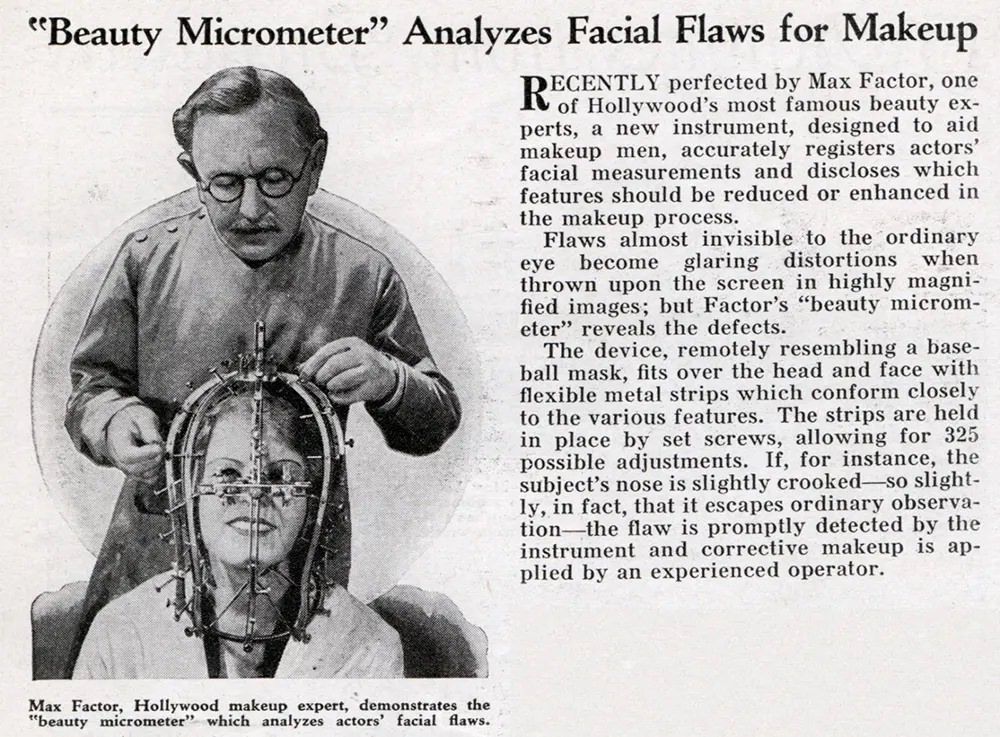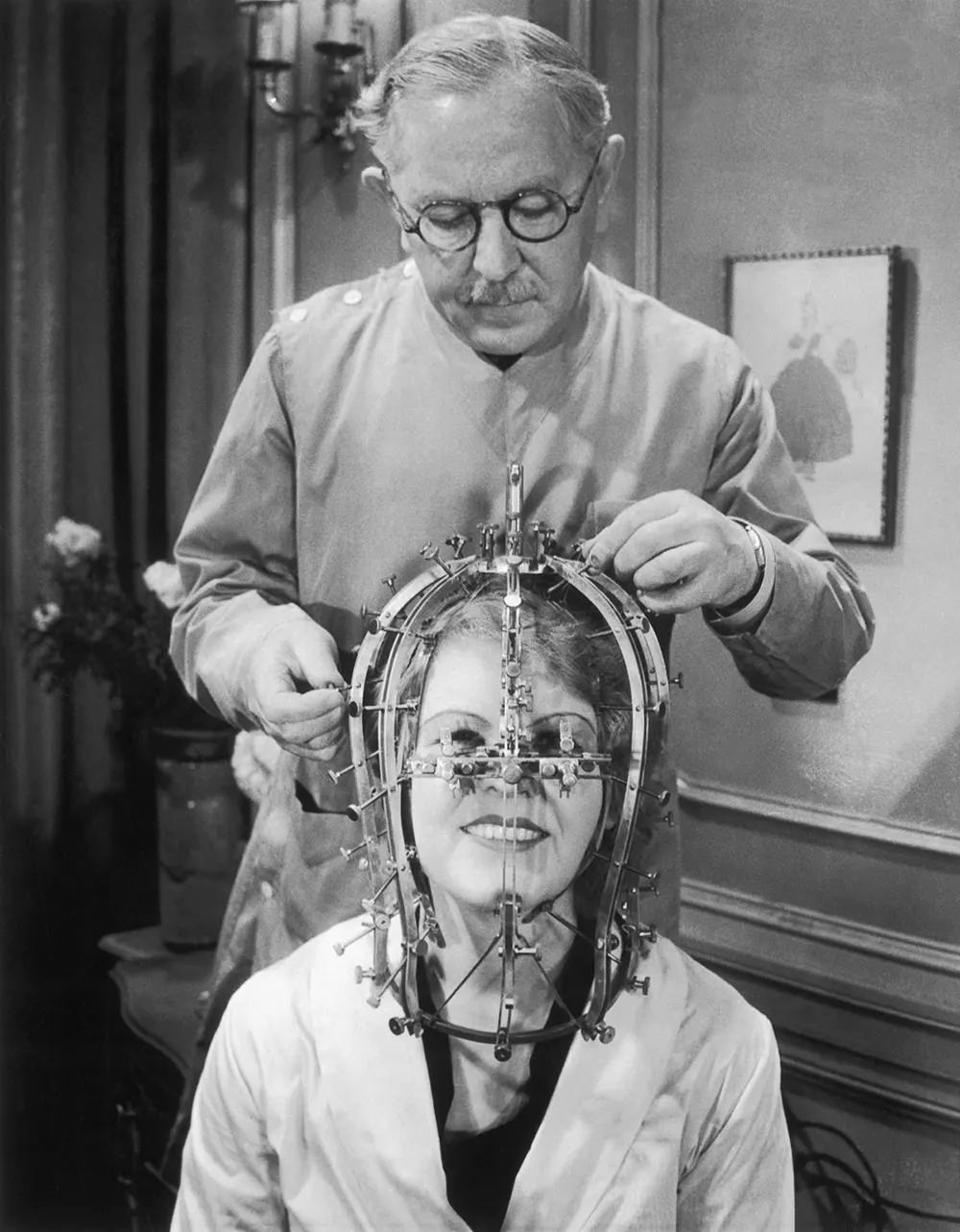Makeup expert Max Factor invented a technique that combined phrenology, cosmetics, and a pseudo-scientific approach to analyze a woman’s facial flaws in the 1930s. The Beauty Micrometer is a Clockwork Orange-inspired device that measures facial ugliness. The beauty micrometer uses flexible metal strips that align with a person’s facial features and are placed around the head and face. Using the screws holding the stripes, the operator can make 325 adjustments, enabling one-thousandth-inch precision measurements. Max Factor stated that two measurements were crucial: the nose and forehead should be the same height, and the width of one eye should separate the eyes. If imperfections are identified, corrective makeup can be applied to enhance or subdue them. According to Max Factor, the device helped him better understand the female face.
The beauty micrometer was developed in 1932 for use in the movie industry. According to the Modern Mechanix article, when actors’ faces are magnified on a large scale, their “flaws” can become “glaring distortions.” In addition to resolving the perceived problem, the inventors envisioned its use in beauty salons. Despite its popularity, it was not widely used. There is only one beauty micrometer believed to exist. It is featured in a display at the Hollywood Entertainment Museum.
Maksymilian Faktorowicz, also known as (Max Factor), was born in 1872. He started working in the cosmetics industry at a young age. After serving in the military, he opened a cosmetics shop near Moscow and soon became the Imperial Russian Grand Opera’s official cosmetics expert. Due to increasing anti-Jewish persecution in the Russian Empire, he and his wife decided to follow his brother Nathan and uncle Fischel to America in 1904. During Ellis Island, a customs officer shortened the family’s surname from Faktorowicz to Factor. With his custom wigs and face products, Factor hoped to get in on the ground floor of the nascent motion picture industry in St. Louis and Los Angeles. He opened a shop on South Central Avenue called “Max Factor’s Antiseptic Hair Store.”
Max Factor began distributing theatrical makeup by Leichner and Minor after founding “Max Factor & Company” in 1909. The new film medium led Factor to experiment with various compounds to create a suitable makeup. By 1914, he had developed the first cosmetic explicitly designed for motion picture use-a thinner greasepaint with 12 graduated shades, packaged in a jar. It would not crack or cake like theatrical cosmetics. As a result of this significant achievement, Max Factor became the authority on cosmetics for filmmakers. In no time, movie stars were eager to try the “flexible greasepaint,” while movie producers sought Factor’s human hair wigs. His sons received parts in old Westerns in exchange for letting him rent the wigs. The boys would watch the expensive wigs. Max Factor made a range of cosmetics available to the public during the 1920s, claiming every girl could look like a movie star. In 1929, the Academy of Motion Picture Arts and Sciences awarded Max Factor an honorary Academy Award for his contributions to the film industry. Max Factor also has a star on the Hollywood Walk of Fame.



















